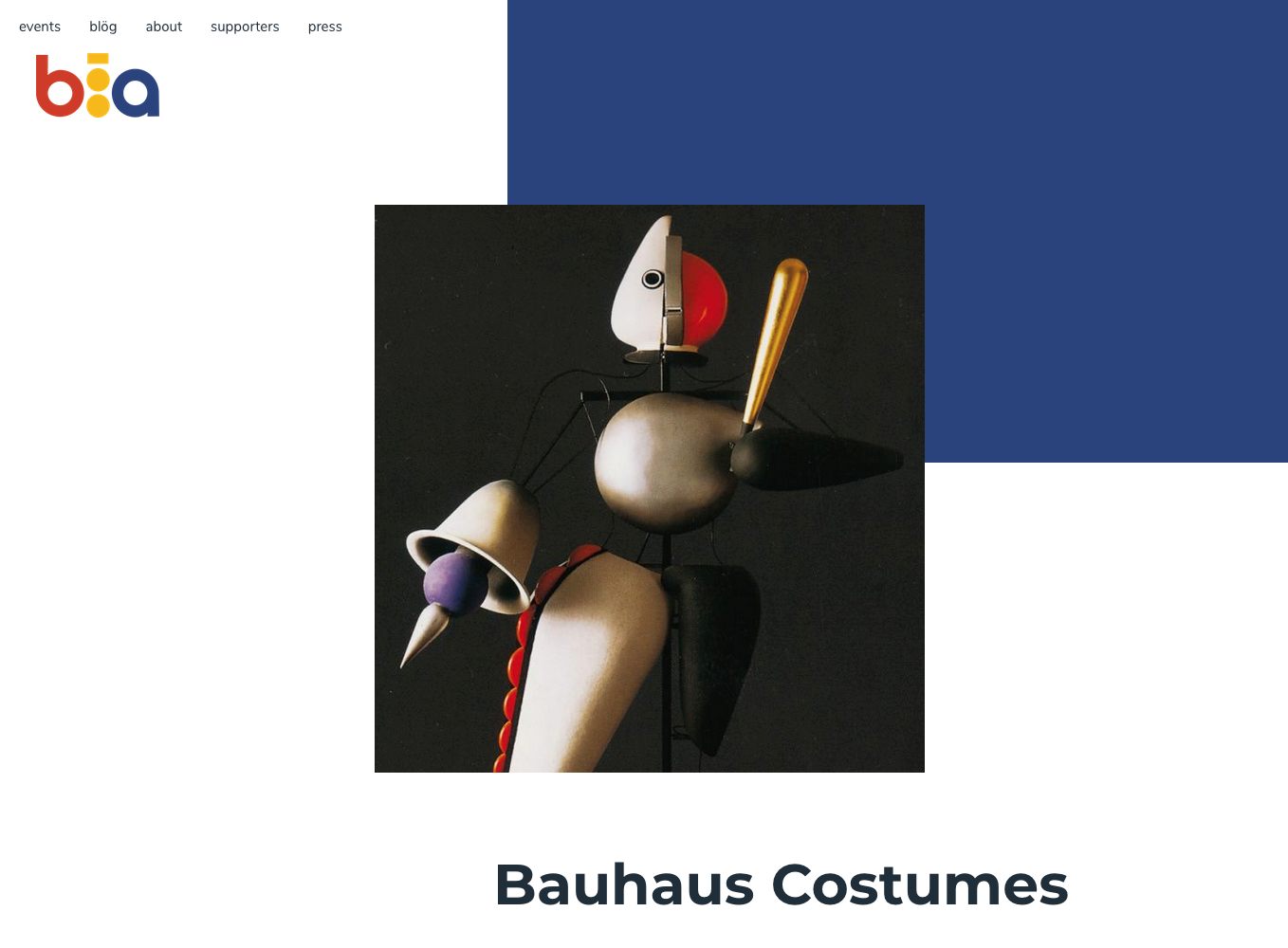Article for the Aspen Institute 2019
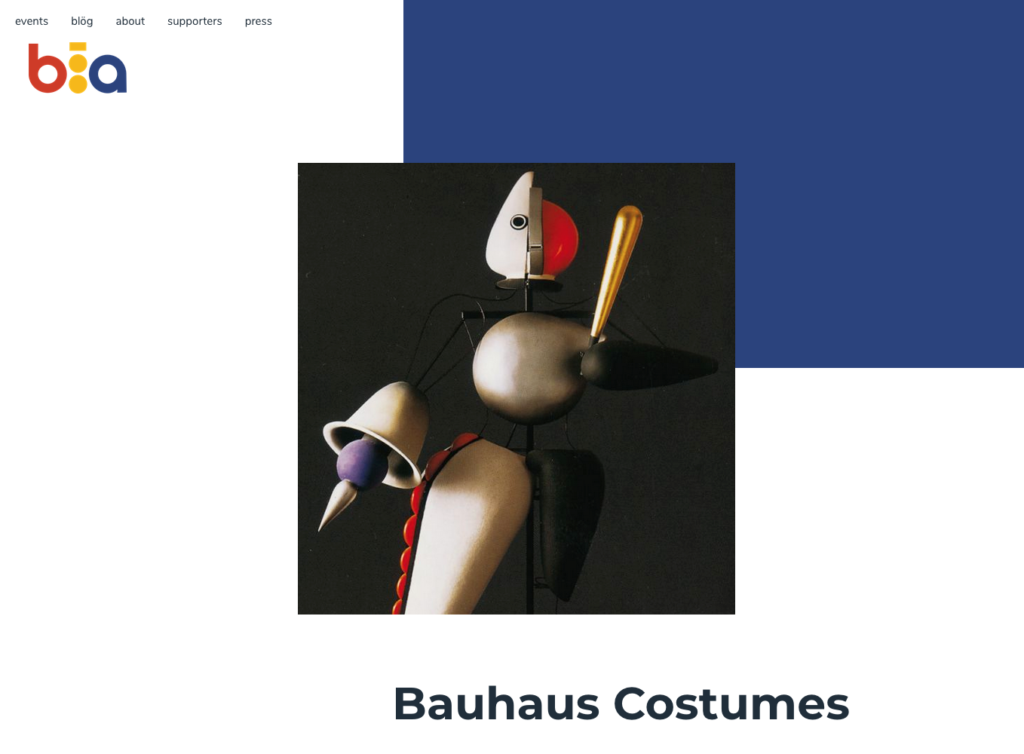
Harry Teague in the recent Bauhaus panel discussion at the Limelight nailed it. Harry always does that but in this case it was one of those crystalline statements one which rings down to your toes. “Bauhaus started as a philosophy but has become a style.”
Sure enough, that’s what we think of when we think of Bauhaus- primary colors- bold geometric shapes. How ironic that a style which was rooted in purpose has become ornament. We recognize the Mondrian colors and the Corbusier blocks but we have lost the “why” and nothing was more important to Bauhaus then the “Why”.
On the eve of Aspen’s own “Bauhaus Ball” maybe it’s time to look at the “Why” of Bauhaus costumes ….the “Why” of the human form and how the costumes for Bauhaus Ballet developed.
“…… I start with a form and use the body simply as a means to it’s realization.”
Oskar Schlemmer
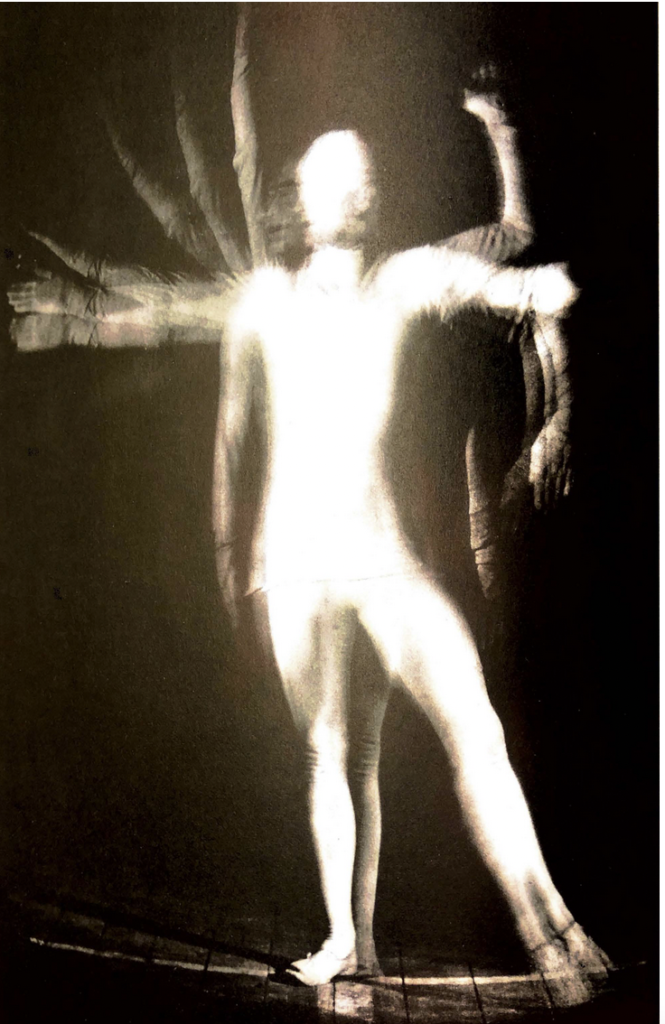
Vol. IV, NO. 2, October 1931 Schrifttanz
… and there we have the essence of Schlemmer’s costumes- to make the form tangible, visible, to capture the dynamic movement of space around the body and how our perceptions of space are altered by dancer’s interactions with that space.
“A ‘space dance’ is what we once called the form of movement theatre which was performed on the Bauhaus’s stage. Three geometrical shapes (a square, a diagonal line and a circle) were drawn on the dance floor and were stepped by three dancers using different tempi and movement sequences. Thus the space itself became intensely expressive, yet this was only due to the dancer’s variations in the sped of their kinetic actions…”
Oskar Schlemmer
Vol. IV, NO. 2, October 1931 Schrifttanz
It takes very little to go one step further.If a dancer can transform our perception of a triangle or a square by stepping in and out of a triangle or a square then what happens if the dancer becomes that triangle and square? What happens if the motion becomes form and the form becomes the costume and the costume redefines the motion?
Cubical space
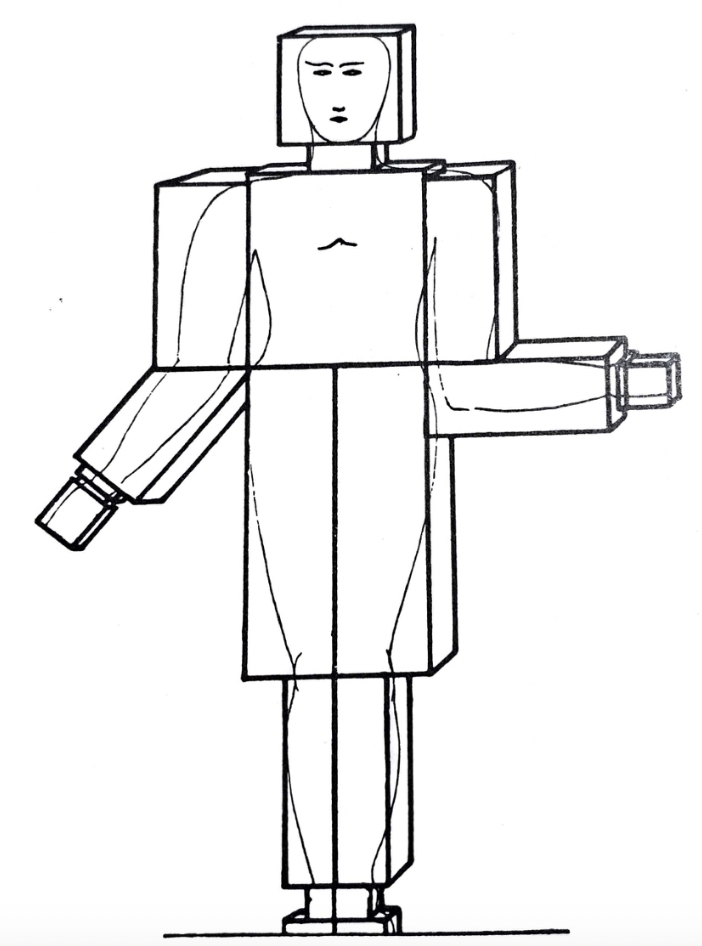
The Marionette: The egg shape of the head, the use shape of the torso the club shape of the arms and legs, the ball shape of the joints
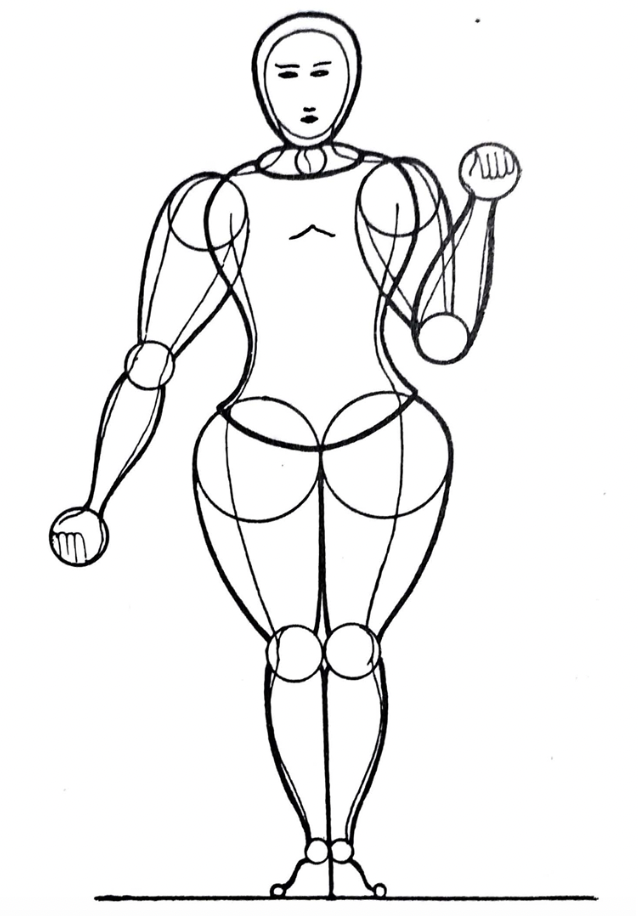
Motion of the human body in space
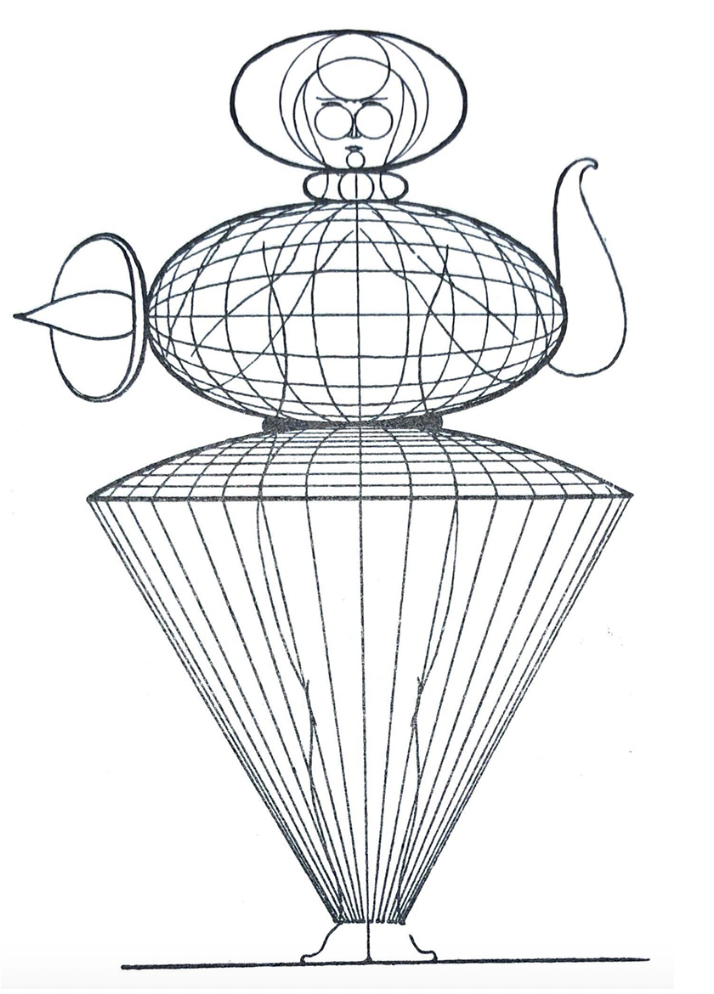
Metaphysical
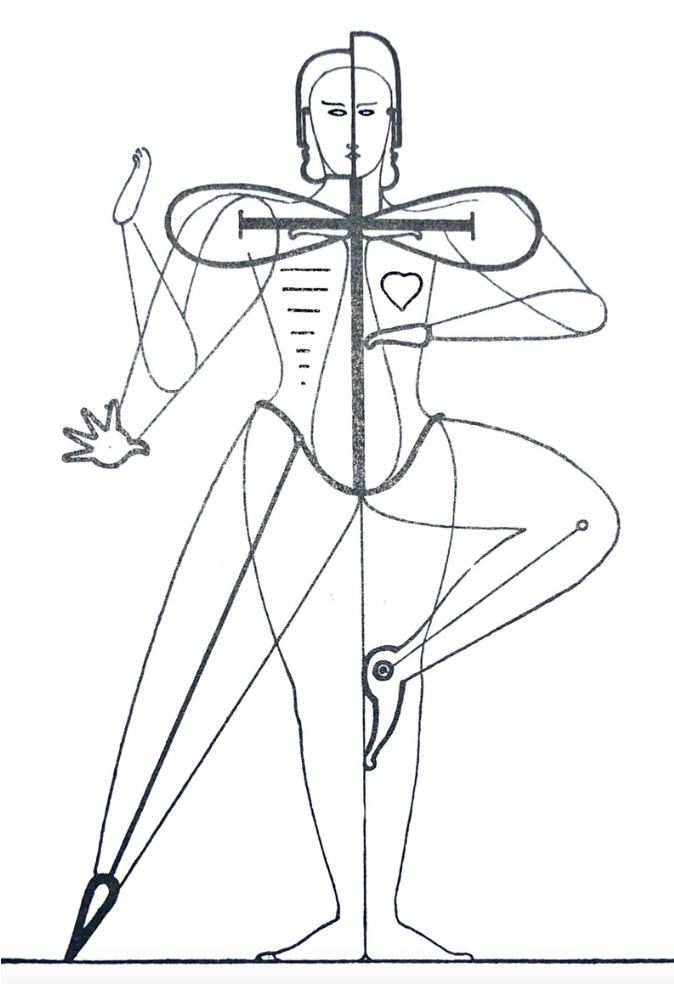
The Theatre of the Bauhaus
Oskar Schlemmer, Lazlo MMoholy-Nagy, Farkas Molnar
“Much of what we did was surprising (even to us). One example is when we tried to fix the centre of a space with the use of tightened ropes and the tensions created a completely different sense of space and movement. another experiment, which had never been tried before even though it seems so obvious, also achieved a surprising result: the use of poles fixed to the dancer’s limbs acting as their extensions. The greatest surprise was the movement itself. …”
Oskar Schlemmer
Vol. IV, NO. 2, October 1931 Schrifttanz
Oskar Schlemmer’s ballet of geometry
https://www.youtube.com/embed/0j0x325uR8s
The difference between the still image of the pole dance and the video of the pole dance is striking. To understand the “why” of these costumes they must move.
“…That the figurines of the Triadic ballet only had meaning when they moved in space, became obvious when we looked at them as motionless exhibits…Even the attempt rotate them mechanically could not replace the dynamic movement in space for which these figurines were planned… The formal approach I used when making the ballet sprung from basic rules of geometry and stereometry which I translated into new, and contemporary, interesting materials. It also sprang from the anatomy of the human body which, apart from being made of flesh and blood and having a mind and feelings, is also a miracle of biomechanics exactness.”
Oskar Schlemmer
Vol. IV, NO. 2, October 1931 Schrifttanz
https://www.youtube.com/embed/mHQmnumnNgo
It is the “style” which still speaks to us today and we play with the pretty colors and the bold geometric shapes but has that original idea become an anachronism? Maybe not.. maybe with Mandelbrot’s fractals and Einstein’s gravitational waves we are coming back to the idea of making the motions of the spheres easier to visualize – easier to understand on a human scale.Think of what was “hot” and “new” and “radical” in the 1920’s and it’s difficult to get past Einstein. If you look at the costumes of Oskar Schlemmer and remember how mass shapes space then maybe… just maybe something begins to click. The theatre and ballet of the Bauhaus was all about the effect of the human form on space. He refers to the “space dance”, the effect of the dancer’s movement not on the human body- but on the surrounding space. The movement within a space changes our perception of that space.
The forms are all pulled towards the central mass of the torso with the exception of the club which defies the laws of physics.
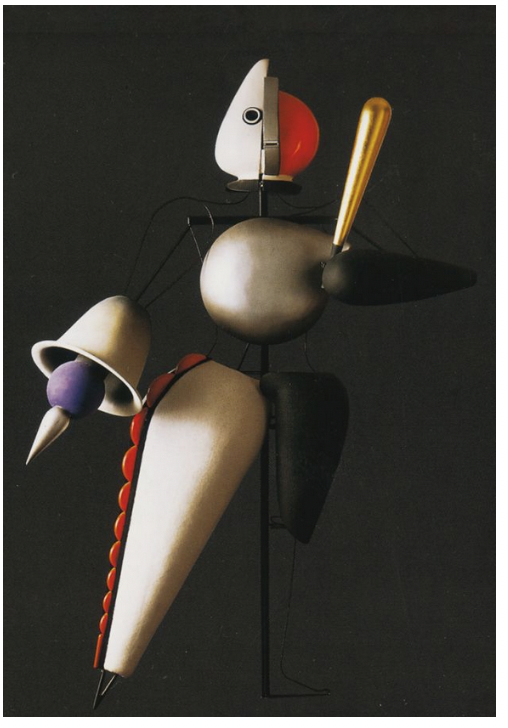
After all that is what Art does it reaches beyond what we can prove in rigorous scientific repetition to what we feel is a hidden truth, a truth yet to be “proved”. Science is successful if the experiment can be repeated Art is successful if it can never be repeated. Art walks the razor’s edge of individual consciousness and when it’s successful touches our shared consciousness in infinite ways. Maybe it is because at their most basic these shapes are the building blocks of the natural world and how their mass changes the shape of the universe is our own river of time.
